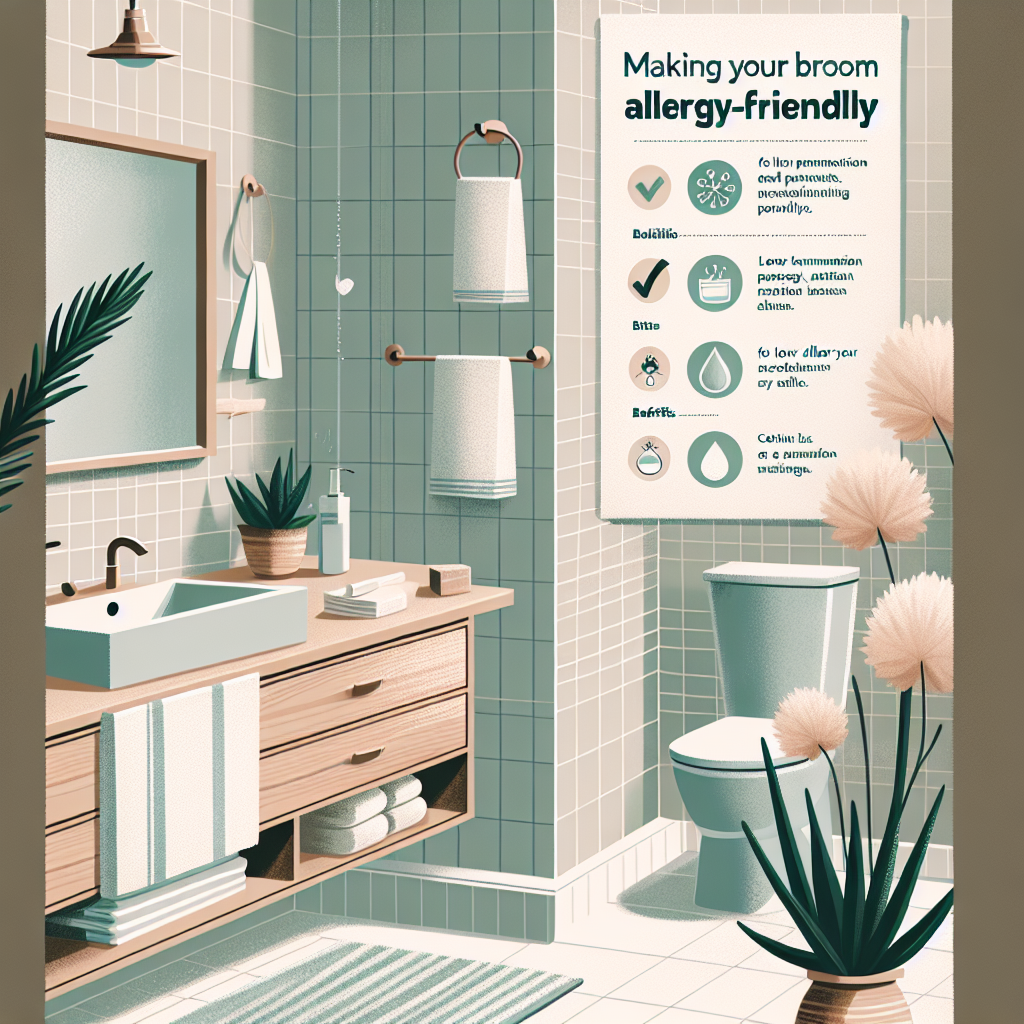If you suffer from allergies, you know how important it is to create a living space that accommodates your health needs. One of the most frequently overlooked areas in a home is the bathroom. This often snug and shared space can harbor allergens, from mold to dust mites, which can exacerbate your symptoms. In this article, we’ll explore how to make your bathroom allergy-friendly by selecting appropriate materials and employing smart design choices. Let’s dive in!
Understanding Bathroom Allergies
Before we jump into materials, it’s essential to understand what makes bathrooms a breeding ground for allergies. High humidity levels, moisture, and inadequate ventilation often contribute to the growth of mold and mildew, both of which are common allergens. Additionally, dust mites thrive in environments where moisture is present.
Choosing the Right Flooring
Opt for Hard Surfaces
When it comes to flooring, opt for hard surfaces like tile, vinyl, or laminate. Unlike carpets, these materials do not trap dust, allergens, or humidity.
- Ceramic or Porcelain Tile: These options are stylish and easy to clean, plus they are resistant to moisture, preventing mold growth.
- Luxury Vinyl: This material not only mimics wood or tile beautifully but also resists scratches and moisture, making it easy to maintain.
Avoid Carpets
While plush carpets can be cozy, they are notorious for trapping allergens. If you can, leave carpets out of your bathroom entirely. If you can’t resist a soft touch underfoot, consider washable rugs made of synthetic materials with low pile.
Selecting Allergen-Free Paint
Go for Low-VOC or No-VOC Paints
Fumes from conventional paints can trigger allergies and asthma symptoms. To ensure your bathroom remains an inviting and healthy space, choose low-VOC (volatile organic compounds) or no-VOC paints.
- Benefits of Low-VOC: They emit fewer harmful chemicals into the air, improving the overall air quality in your home.
- Finishing Touch: Don’t forget to ensure the paint is mold-resistant, providing an extra layer of protection against dampness.
Examining Fixtures and Fittings
Stainless Steel and Non-Porous Material
When selecting fixtures and fittings, choose stainless steel or other non-porous materials. These surfaces are less likely to harbor mold compared to porous materials.
- Benefits of Stainless Steel: Not only is it durable, but it’s also easy to clean and does not trap moisture like other metals.
Natural Stone Considerations
If you’re considering natural stone, ensure it’s sealed properly to prevent moisture absorption and mold growth. Granite and quartz are solid options that can add a luxurious touch to your bathroom without sacrificing allergy safety.
Smart Choices for Countertops
Go for Quartz or Solid Surface Options
When it comes to countertops, solid surfaces like quartz are fantastic choices. They are non-porous and resistant to staining and moisture, making them unlikely candidates for attracting allergens.
- Less Maintenance: The non-porous nature means you won’t have to deal with the hassle of resealing, unlike some natural stones.
Ventilation: The Unsung Hero
Invest in an Exhaust Fan
Proper ventilation is crucial for managing humidity levels in your bathroom. An effective exhaust fan will reduce moisture, thwarting mold and mildew growth.
- Timer Features: Consider installing models with timers or humidistats to ensure they run long enough to eliminate humidity after showers.
Natural Ventilation
If your bathroom has a window, keep it open whenever possible to promote airflow. Natural light can also help stave off dampness, enhancing your overall bathroom environment.
Creating a Mold-Resistant Environment
Keep It Dry
Make it a habit to wipe down surfaces after every use. Use squeegees on the shower walls and keep towels dry and well-hung to prevent moisture accumulation.
Regular Cleaning
Invest in hypoallergenic cleaning products that are free from harsh chemicals. Regularly clean your bathroom to ensure the eradication of any potential allergens.
Conclusion: A Breath of Fresh Air
Transforming your bathroom into an allergy-friendly haven is achievable with thoughtful material choices and maintenance practices. By opting for hard surfaces, low-VOC paints, stainless steel fixtures, and effective ventilation, you can create a space that not only feels welcoming but also supports your well-being.
As you embark on this journey to improve your home environment, remember that small steps lead to substantial changes. Your bathroom can be more than just a functional space; it can be an oasis tailored to meet your health needs. Embrace the change and breathe easier!
By incorporating these tips, anyone can create a beautiful, practical, and allergy-friendly bathroom that promotes health and peace. It’s time to turn your bathroom into a sanctuary where you can relax without worry!


